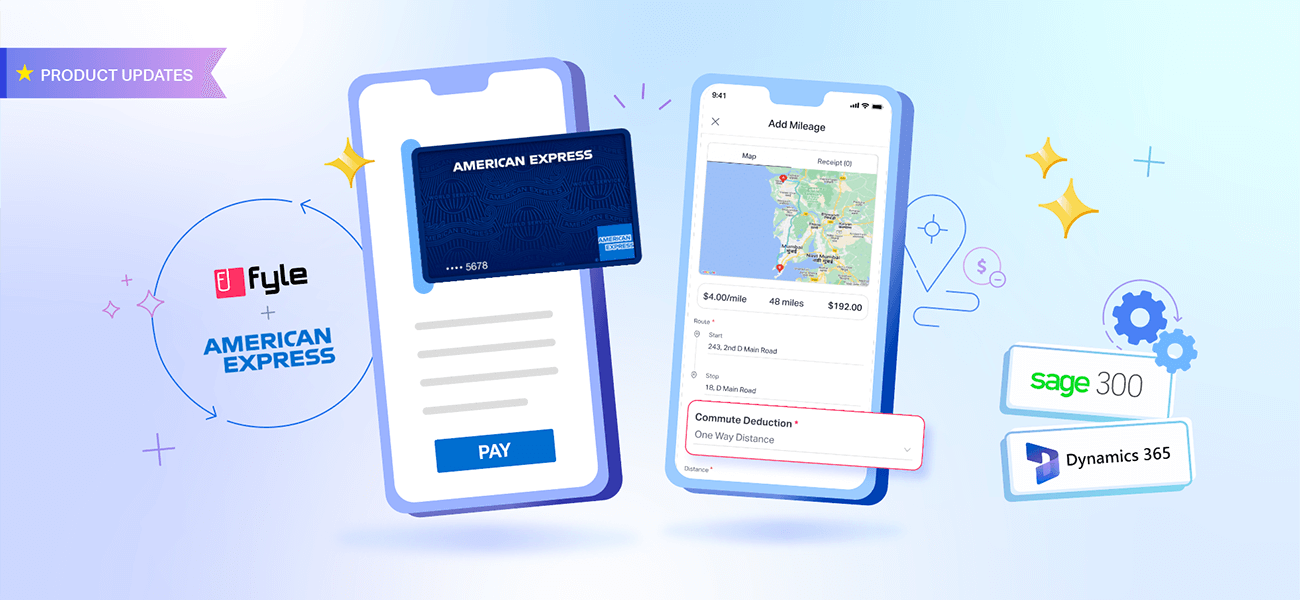With over 50% of the world's population owning and using a mobile device, cell phone use has become second nature to most.
From checking emails and sending text messages to hosting video conferences, many professionals rely on cell phones as their mobile office. If you're a business owner running a successful company, chances are you have multiple employees using their mobile devices for work.
How much of that money are you required to pay back? What personal cell phone use is considered "work-related"? And how do you measure these factors? Here we'll break down the newest laws in cell phone reimbursement and how to guarantee both you and your employees are getting a fair deal.
Laws for Cell Phone Reimbursement
Offering cell phone reimbursement isn't just about being a kind-hearted boss. There are actually laws surrounding what employees are entitled to when it comes to compensation for personal cell phone use. Some even compare it to unauthorized overtime.
These laws protect both employees and employers. Without a stipend in place, staff members can sue their employers for associated costs. On the flip side, employees may be liable for compromising secure company information.
While these laws vary from state to state, California is leading the way in this growing trend. These changes came on the heels of a controversial court case: Cochran vs. Schwan's Home Services.
During this milestone case, the California Court of Appeals filed a class-action lawsuit on behalf of 1,500 customer service managers. The basis of the case was that these employees were not reimbursed for incurred expenses for work-related use.
The caveat is that, in California, regardless of whether the employer approves personal cell phone use for employees if expenses are incurred, they have to pay. While this may seem unfair to some, it's the California law.
Another controversial aspect of this law is that employees deserve reimbursement even if work-related use didn't cost them a single dime! If the employee has unlimited minutes or data, the employer is still required to pay "a reasonable percentage of the employee's cell phone bill."
The defense is that the company is passing its operating expenses onto the employee. One thing that still remains undetermined is what constitutes a reasonable percentage? This question makes it difficult for employers to decide on what type of cell phone reimbursement to create and how to protect themselves against legal ramifications.
SUGGESTED READ: How to create an IRS-compliant expense reimbursement policy
How Address the Cell Phone Reimbursement Challenges?
With so many different laws and unclear expectations, how can companies create a compliant, reasonable cell phone reimbursement policy?
Some are going as far as banning cell phones in the workplace, to avoid the risk and complications associated with creating policies and stipends. The downside is that this could potentially impact employee productivity and company morale.
Instead of resigning yourself to being "damned if you do and damned if you don't", let's examine different ways to approach the cell phone reimbursement debate.
SUGGESTED READ: Balancing expense policy compliance and happy employees
Pay the Employees’ Entire Cell Phone Bill
While this is an unpopular solution for many employers, for some, it's more about peace of mind. By simply paying for your staff's cell phone bills, you're sidestepping any sticky legal issues or long, drawn-out debates over percentages.
Some companies prefer not to play the nickel and dime game, and instead, just pay the entire amount. This is especially suitable for companies whose employees use their personal phones for work on a regular basis. The major downside of this option is obvious – cost. Depending on the size of the company and the number of employees, paying multiple cell phone bills could get quite costly.
Require Employees to Prove Cell Phone Use
The proof is in the pudding, and many employers want to see exactly what their employees are claiming as work-related expenses.
In this situation, companies create a policy that requires staff to prove any work-related cell phone usage and expenses. As you could imagine, this approach gets quite tedious and time-consuming.
A solution is to calculate the average time spent on work-related projects and then pay that portion of the employee's total cell phone bill. Even this can take precious time and energy better spent elsewhere.
The advantage of this approach is that employers are only paying for what employees actually use. This is also considered the most accurate way to calculate a reasonable percentage of use – if you have the time and patience to do it.
Pay Employees a Fixed Amount
For those companies looking at cutting down on administrative costs, simply paying employees a fixed amount is a viable option. But remember, employees must agree on this amount, and it should be clearly outlined in the policy.
If employees feel entitled to more than the fixed amount, many companies require them to submit proof. The biggest benefit of this approach is that the cost is relatively stable. This makes it easier for employers to budget and allocate funds to cover cell phone reimbursement. The biggest downside to this form of cell phone reimbursement is the grey area that exists between the fixed amount and what the employees feel they're entitled to. By using this method, companies are opening the door to countless discrepancies, which can become troublesome, both financially and legally.
Create Cell Phone Expense Accounts
Expense accounts are commonplace in larger corporations that require employees to travel and network as part of their job description. Why not lump cell phone use under the umbrella of expense accounts?
This means employees are paid for their exact amount of work-related personal cell phone use — to the penny. This places responsibility on the employee.
For employers, this means more administrative legwork, which can increase overhead costs. It's also difficult to calculate a true figure in terms of cell phone use for employees with unlimited data plans.
Issue Company Phones
This is a popular option for a wide range of companies. Providing employees with a company cell phone means the expenses are already calculated.
If the employee chooses to use their personal mobile device, that's on them! You've provided a cell phone specifically for that purpose. On the other hand, employers are now tasked with making sure employees aren't using the company phone for personal use.
The good news is, the employer has access to all cell phone records and can control the associated plans. Employers also rest easy knowing their employees have the necessary tools to complete the job. Companies must also consider costs when it comes to purchasing phones company-wide. There's also no guarantee that employees will treat the issued phones with care. Companies run the risk of employees damaging, losing, or having company phones stolen – this adds replacement costs to the equation.
SUGGESTED READS:
Most common mistakes in corporate expense management
Your ultimate guide to tackling corporate travel and expense management challenges
What are Bring Your Own Device (BYOD) Policies?
BYOD, or bring your own device, policies are becoming more common in work environments. Under these policies, many employers are paying anywhere from $30 to $50 per month toward employee cell phone bills. This figure varies depending on the company and the agreed-upon policy.
These payments are referred to as mobile stipends. Employers consider several factors when drafting accountable policies for candidate reimbursement and determining stipend amounts. Here are just a few:
- Carrier fees
- Mobile management overhead
- New device purchases
- Mobile expense management software
But these BYOD policies cover much more than only cell phone bills. They also address security measures that keep both the employee and the company information safe and confidential.
SUGGESTED READ: Expense reimbursement policy best practices for your business
Closing Arguments
There's no one-size-fits-all approach to cell phone reimbursement for employees, and some businesses may decide to opt for a virtual business phone system with a virtual phone number instead. Virtual business phone systems often make internal and external communications of the company much easier.
Employers must protect their legal interests, as well as their integrity. Here are a few things to keep in mind when considering what type of cell phone reimbursement policy is best for your business:
Calculate Cost
As with most things in life, it comes down to money. Which of these options makes the most financial sense for your company?
- If you have the manpower, the most accurate way to offer cell phone reimbursement is to create expense accounts or offer a fixed amount.
- If money is no object, issue company cell phones or simply pay your employees' entire bill.
Sit down and crunch numbers before you settle on a solution.
Create an Easy to Understand Cell Phone Reimbursement Policy
Whatever expense reimbursement policy you craft, make sure the guidelines are abundantly clear.
- Include a detailed outline of what the company's expectations are.
- How much you are willing to pay, and how that percentage will be calculated.
- If you choose to provide company cell phones, be prepared to monitor their use and be explicit about what is approved for work-related use.
SUGGESTED READ: Five ways to make expense reporting easier for employees
How Can Fyle Help With Cell Phone Stipends?
In today's fast-paced world, everybody is dependent on phones for the majority of the day. It's no surprise that cell phone reimbursement has become a hot topic. Yet, the question still remains, how much of that is for personal use, and how much is work-related? This is the question companies across the globe are trying to answer.
While we leave the choices up to you, Fyle can do much more than just streamlining your employee reimbursements!
Do you need help managing your company's expenses and drafting clear policies? Fyle is a new-age expense management software that can solve all your expense management woes! Schedule a demo today, and let's get started!











